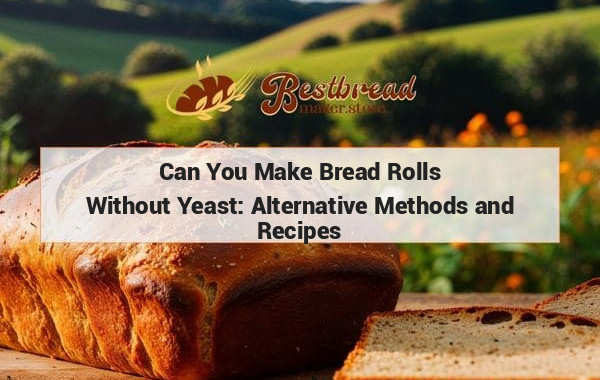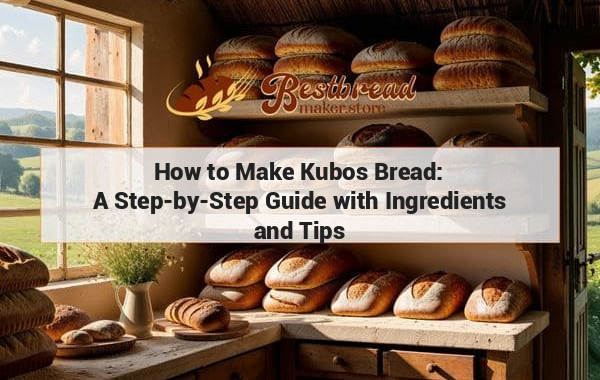Can I Make Sourdough Bread in a Bread Maker: A Complete Guide
Yes, you can make sourdough bread in a bread maker. Simply mix the sourdough starter with flour, salt, and water, then let it rise for a few hours. After that, follow the instructions of your bread maker for baking. Enjoy your homemade sourdough bread without the need for kneading or shaping by hand.
Can I make sourdough bread in a bread maker? The short answer is yes, and it can be surprisingly simple with the right approach. With a bread maker, you can enjoy the tangy flavor and chewy texture of sourdough with less effort than traditional methods. Whether you’re new to sourdough or an experienced baker looking for a more convenient process, using a bread maker can save time while still producing delicious results.
Key Takeaways: You can make sourdough bread in a bread maker by following specific steps to adapt the long fermentation process. Ensure that your machine has a customizable dough cycle for optimal results.
How to Make Sourdough Bread in a Bread Maker
One of the biggest challenges when making sourdough bread is timing the long fermentation process. Unlike regular bread that uses commercial yeast, sourdough relies on a starter, which takes time to develop its signature flavor. Luckily, modern bread makers offer options to work around this.
Understanding the Sourdough Starter
The foundation of any good sourdough loaf is a starter, which is a mixture of flour and water fermented with natural yeasts. To make sourdough in a bread maker, you'll need an active starter that's been fed regularly and has developed bubbles, indicating fermentation is at its peak. This starter is responsible for the flavor and rise of your bread, so its health is key.
How to Make Your Own Sourdough Starter
- Mix equal parts of flour and water. For a basic starter, use whole wheat flour for the initial batch to capture more wild yeast from the environment.
- Leave it in a warm place to ferment. Stir it daily, and after a few days, you’ll see bubbles forming.
- Feed it daily by discarding half the mixture and replenishing it with fresh flour and water.
- In about 7-10 days, your starter will be ready to use in the bread maker.
Customizing Your Bread Maker's Dough Cycle
Most bread makers come with a dough cycle that mixes, kneads, and allows the dough to rise. For sourdough, however, you’ll want to ensure that your bread maker has a custom dough cycle, or you'll need to time the rising manually to suit the slow fermentation process.
Step-by-Step Guide for Sourdough Bread in a Bread Maker
- Prepare your sourdough starter. Feed it 4-6 hours before you plan to make your bread to ensure it's active.
- Combine ingredients in the bread maker. Add water, flour, salt, and a portion of your sourdough starter to the bread maker.
- Select the dough cycle. If possible, choose a longer rise option, or stop the machine during the rising period to allow more time for fermentation.
- Watch the process. Once the dough has finished rising, check its consistency. If it has doubled in size and appears bubbly, it's ready for baking.
- Choose the bake setting. Many machines have an automatic bake feature, or you can remove the dough after rising and bake it in the oven for a crispier crust.
Why Use a Bread Maker for Sourdough?
Using a bread maker simplifies the process of making sourdough. Traditional sourdough baking requires careful timing and temperature control. A bread maker helps by automating some of the more labor-intensive steps like kneading and initial rising, making it a great tool for those who love the flavor of sourdough but don’t have the time to dedicate to a full-day baking project.
Convenience and Time-Saving
The primary advantage of using a bread maker for sourdough is convenience. With its automatic settings, you can save time on tasks like kneading the dough and monitoring the fermentation process. You can start the dough cycle in the morning, let the machine do the hard work, and enjoy freshly baked bread by dinner.
Customizable Settings
Many modern bread makers come with customizable settings, allowing you to adjust the fermentation time to suit sourdough's slower process. If your bread maker has a "manual" or "custom" mode, you can program it to pause during critical stages, ensuring the dough has enough time to develop flavor and texture.
Choosing the Right Bread Maker
Not all bread makers are created equal when it comes to sourdough. Some machines are better suited for the task than others. When choosing a bread maker, look for these key features:
- Customizable Dough Cycle: As mentioned, this allows you to control the rise time better, which is crucial for sourdough.
- High-Quality Kneading Paddles: Sourdough can be a tough dough to knead, so having durable paddles ensures that the dough is properly mixed and developed.
- Larger Capacity: Sourdough often requires more space due to its longer fermentation and rise times.
For those looking to buy a new bread maker, you can find top-rated models at bestbreadmaker.store, which offers comprehensive reviews of the best machines for making sourdough and other types of bread.
Key Tips for Better Sourdough Bread in a Bread Maker
Even though a bread maker automates much of the process, there are still a few tips and tricks to ensure you get the best possible sourdough loaf:
- Feed Your Starter Regularly: A healthy, active starter is the most critical component of sourdough bread. Make sure it's bubbling and has a pleasant, yeasty aroma before you use it.
- Use High-Quality Flour: Bread flour with a high protein content will give your sourdough better structure and chew.
- Monitor the Dough's Texture: Sourdough dough can be stickier than regular bread dough. If it seems too wet, add a bit more flour. If it's too dry, add a little water.
- Let the Dough Rest Longer: Sourdough benefits from longer rest periods, known as autolyse, where the dough sits before the final kneading to allow the flour to fully hydrate. This helps improve the bread’s texture and crumb.
Frequently Asked Questions
Can I use my sourdough starter directly from the fridge?
It’s best to feed your starter and let it become active before using it in the bread maker. A cold starter might not give your dough enough rise.
How long should sourdough rise in a bread maker?
Sourdough needs a longer rise time than regular yeast-based doughs. Ideally, the dough should rise for 4-6 hours, depending on the strength of your starter and room temperature.
Can I adjust the settings on my bread maker for sourdough?
Yes, many modern bread makers allow you to customize settings. If your machine doesn’t, you can manually pause it to extend the rise time.
Why is my sourdough bread dense?
If your sourdough loaf is too dense, it could be because the starter wasn't active enough, or the dough didn’t rise long enough. Make sure your starter is well-fed, and allow extra time for rising.
Can I bake sourdough in the oven instead of the bread maker?
Absolutely. You can use the bread maker for mixing and kneading, then transfer the dough to the oven for baking. This gives you more control over the final crust and texture.
In conclusion, making sourdough bread in a bread maker is not only possible but can also simplify the process significantly. With a few adjustments and an understanding of how sourdough works, you can enjoy the classic flavor of this beloved bread with less effort and time.








